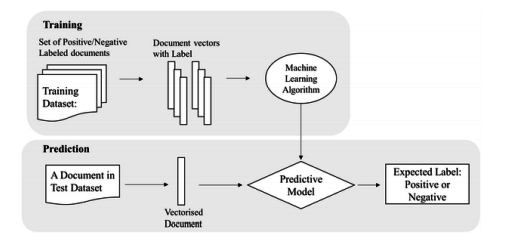

ML Algorithms in Online User Reviews for Analysis - DZone AI
source link: https://dzone.com/articles/ml-algorithms-in-online-user-reviews-for-sentiment
Go to the source link to view the article. You can view the picture content, updated content and better typesetting reading experience. If the link is broken, please click the button below to view the snapshot at that time.

ML Algorithms in Online User Reviews for Sentiment Analysis
Learn more about how machine learning as a facilitator can sort out data classification problems with a sentiment analysis approach.
Join the DZone community and get the full member experience.
Join For FreeThe online ecosystem is designed to be open for live interactions. Online users can indulge in immersive web pages, engage in social conversations, and post online reviews. Web platforms are built to encourage users to post opinions without restrictions. This has stretched the scope for building several meaningful digital experiences in the web ecosystem.
Online products and services get positive and, every now and then, negative reviews. A fair amount of scrutinizing behavior by users can be spotted on most online platforms. Heaps of reviews are posted online by users on marketplaces, community web pages, and social media pages. The growing volume of user review data, especially that causes damage to a company’s online reputation, requires efficient management. This has pushed companies to monitor what users write about the products and the services across the web and adopt the methodologies of sentiment analysis.
Machine Learning Algorithms in Application
Several companies have faced the dilemma of letting users post negative and distasteful reviews about their services. Meanwhile, distinguished user communities have struggled to keep communities safe and free from inflammatory and often biased reviews and opinions. To cut through this flaring chaos, Artificial Intelligence and Machine Learning have given much-required respite.
For understanding the motive or sentiments in each user review, the computation technique of sentiment analysis is widely adopted through automated applications. Sentiment analysis can be examined both with ML approach and Lexicon-based approach. We will be taking up the ML approach here.

Image credits: indjst
Sentiment analysis is also called opinion mining, as there are large-sized datasets that are analyzed, often through the text mining process. Various sub-approaches like Topic Modeling are also in scanning user sentiments. In application, sentiment analysis is an NLP task and involves the extraction of textual data for studying the context to map with the labeled training data. Machine learning sorts sentiment analysis through supervised algorithms like Naive Bayes (NB) Classifier and Support Vector Machine (SVM). Let us explain how algorithms do the task with sentiment analysis classification from the training data.
Support Vector Machine (SVM)
This classifier is used on different classes of labeled training data and through hyperplane, the algorithms help in the classification of the data. It is primarily applied for linear and logical regression. In SVM, kernel equations play a key role in transforming the data problem, for which there are different types of equations. The kernel equations help in arranging the data for sentiment analysis and separate one instance from another in multi-dimensional space.
Naive Bayes (NB) Classifier
NB classifier is based on Bayes' theorem which functions and performs classification on the basis of probability. In terms of sentiment classification from the available data, the NB classifier helps in finding out the probability of relation individually in different types of data. Naive Bayes makes data classification by classifying each instance separately and treating it as new each time. Though this algorithm is not straightforward, it shows satisfactory results on big labeled datasets.

To add to it, ML algorithms work to analyze and categorize user reviews for further action in Artificial Intelligence programs. They work to transform entire reviews in numerical form before being fed to the machine learning models. Upon running the algorithms, the data will produce useful reviews and also produce summaries of the important ones from the ones that should be discarded. Both Support Vector Machine (SVM) and Naive Bayes (NB) Classifier algorithms have proven to be about 95% accurate when applied on massive labeled training data sets for Artificial intelligence applications, pertaining to analyzing online user reviews.
Concluding Note
Users have the liberty to write and post both negative and positive experiences, a reason quite legit in the online world. It is expected from the service provider that user sentiments must be respected and acknowledged. However, it becomes an issue when it is hateful or violates community guidelines. At the same time, companies looking to enhance the user experience may want to analyze user reviews from an applicability perspective as well. For example, when a user speaks negatively about the brand, it might or might not be useful from a business perspective. In this regard, the end goal is the right parameter to judge the usability of sentiment analysis tasks for NLP problems.
Sentiment analysisis not rocket science and neither is putting machine learning algorithms to the task. A deeper classification of the training data set from a granular level would be essential to establish the data and business objective connection. Experimentation of data by combing various learning models for classifying and ranking the user reviews is far more significant for the AI application to learn and get trained on.
Recommend
About Joyk
Aggregate valuable and interesting links.
Joyk means Joy of geeK